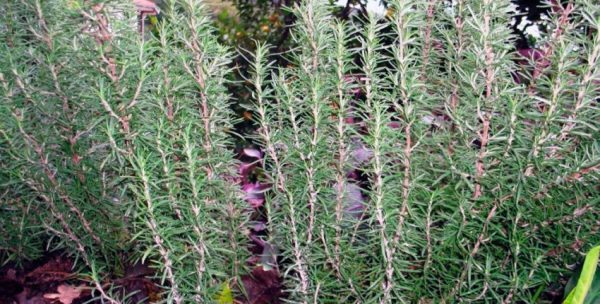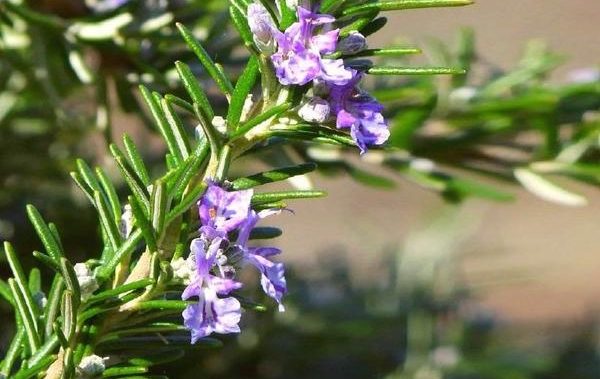Tips for growing rosemary outdoors in the Moscow region
Content
How to grow correctly
It is possible to grow a bushy perennial, which feels great in the Mediterranean climate (dry hot summers and wet cool winters), and in other climatic zones. The main thing is to do it right. The fragrant bush is very demanding on lighting and heat. And, although a plant that is more than three years old can tolerate frosts down to -15 degrees, it dies with a further decrease in temperature. In order for rosemary to please the eye for many years in a mixborder or in a green fence, a number of factors must be taken into account:
- the soil for its cultivation should be loose and dryish (excessive moisture and drying out are excluded, the soil can be any, but not acidic, preferably lime);
- moderate air humidity;
- requires periodic watering, without over-wetting the soil;
- shade and wind negatively affect rosemary.
Planting and leaving
Planting a perennial in open ground is carried out using cuttings, layering, seeds - according to the standard scheme of 50x50 cm.This usually occurs in late spring after the end of frost, when it is warm enough - in early to mid-May. A perennial will feel good when, in moderately moist, loose soil, there will be: sand, deciduous-sod land and a little humus (1: 4: 2). Before planting it, it is necessary to moderately moisten the soil by placing cuttings, layering or seeds to a depth of 0.4 (for seeds) - 4 (for layering and cuttings) centimeters, sprinkling with loose soil. The place should be well lit.
The spicy bush does not require any special care, it is not susceptible to diseases, pests also bypass it (apparently because of the aroma). It must be watered regularly and moderately, but not overmoisten the soil. If the leaves begin to turn yellow, it means that there is not enough moisture. If the plant sheds leaves, it means, on the contrary, an excess of moisture.
By these signs, you can navigate how much water is required for irrigation. Weed and loosen, like any other flowers, rosemary is also necessary. Top dressing is optional, but to make it look beautiful, you can use a complex mineral and organic fertilizer containing phosphorus and nitrogen once a month. In the spring - watering with nitrogen fertilizers (they perfectly strengthen the root system), in the fall - with phosphorus.
Old bushes are rejuvenated every 7 years, cutting off in March-April to the level of the soil - this is how new beautiful shoots are formed. After the flowering of a young bush, you can additionally cut off shoots up to 3 cm (end of summer) to strengthen them during growth. A perennial wintering in a summer cottage or a personal plot in the Moscow region must be covered so that it does not die out. For this, cuttings of spruce branches, pointed at the ends, are stuck around the bushes at a slight angle, thus constructing a protective "tent". Additionally, cover with a layer of dry leaves. Some summer residents transplant rosemary into pots for the winter and transfer it to a cool and bright room (it is possible to store it in the basement, sprinkling the roots with earth, but sufficient lighting must be provided).At the same time, you should be aware that a plant grown in an open field is unlikely to survive and adapt to new conditions if it is transplanted into a pot as a permanent container culture.
Video "Tips for Planting Rosemary"
Informational video with useful tips for gardeners.
Propagation by cuttings
Of the cuttings, the cultivation of a perennial is the most reliable, especially since an adult plant is easily cut by cuttings. Cut and place the cuttings in a vessel with water or in river sand, covering with a jar or cling film on top to ensure a comfortable microclimate. When the roots appear (after 3-5 weeks), the leaves are removed from the lower part of the cutting and planted in small containers (up to 10 cm in diameter), placing them in a warm, bright place. The plant can be sprayed to prevent the soil from drying out completely. Before planting, it will be useful to dip the root of the cutting into a solution with a rooting preparation.
In addition, the top of the sprouts must be pinned, which contributes to the development of a strong root system and branching. Interestingly, perennials can even be grown from cuttings bought at the supermarket. In this case, the top is used as a seasoning, and the main branch is planted in the ground, placing the container in a bright, warm place and watering it regularly. The growing branches are pinched.
We breed rosemary with layering
The cultivation of a spicy bush and layering has proven itself well. To do this, you need to find the lower shoot of the plant, which can be bent to the ground, and dig it in. As soon as the top of the shoot sprouts, carefully cut off the sprout from the main branch and, after carefully digging it out, transplant it into a separate container. It is important to know that cuttings and cuttings should not be planted immediately in a large container, since the soil that has not been mastered by the roots can acidify, which is detrimental to the plant.
Seed planting
It is possible to grow a spicy perennial from seeds, which are easy to purchase at a flower shop. The seeds can be pre-soaked to speed up their riveting. They are sown in pots to a depth of 0.3-0.4 cm, lightly sprinkling with sand on top. The ground must always be slightly moistened - for this, the container is covered with foil or glass, thus creating a constant microclimate. In this case, the air temperature should be + 12 + 20 degrees. In about a month, seedlings will appear - they must be dived in a timely manner in a 6x6 cm container.
The soil composition for growing a plant should be loose and include: leafy, humus soil, coarse sand (2: 1: 2), peat should not be added. Of course, growing rosemary from seeds is a rather lengthy process, and it will take more than one year for it to turn into a large fluffy bushy bush.
Outdoor cultivation
In order for the cultivation of a spicy bush on the site to be successful, the following points must be remembered:
- Basic basic conditions: sun, good drainage and air circulation. It is necessary to plant strong shoots (emerging from seeds, cuttings or cuttings) in a well-lit area.
- Rosemary does not bloom next to a rose, and generally does not tolerate such a neighborhood (a young plant begins to bloom in the second or third year).
- He does not like drafts, therefore, it is preferable to grow perennials near the walls of buildings, which will become protection from winds and drafts.
- It develops well on the southern and eastern slopes (dry and open).
- Does not require spraying. If the foliage dries up, it is necessary to shade the bushes a little from the direct rays of the sun in the morning or in the afternoon.
- Does not tolerate damp and acidic soils.
- During the growth period, it requires regular watering (you can use tap water to moderate soil moisture).
Don't be discouraged if you can't grow beautiful rosemary the first time. Just try again, taking into account all the tips in this material. I wish you success!
Video "Detailed instructions"
Video instruction for planting a plant from seeds.






